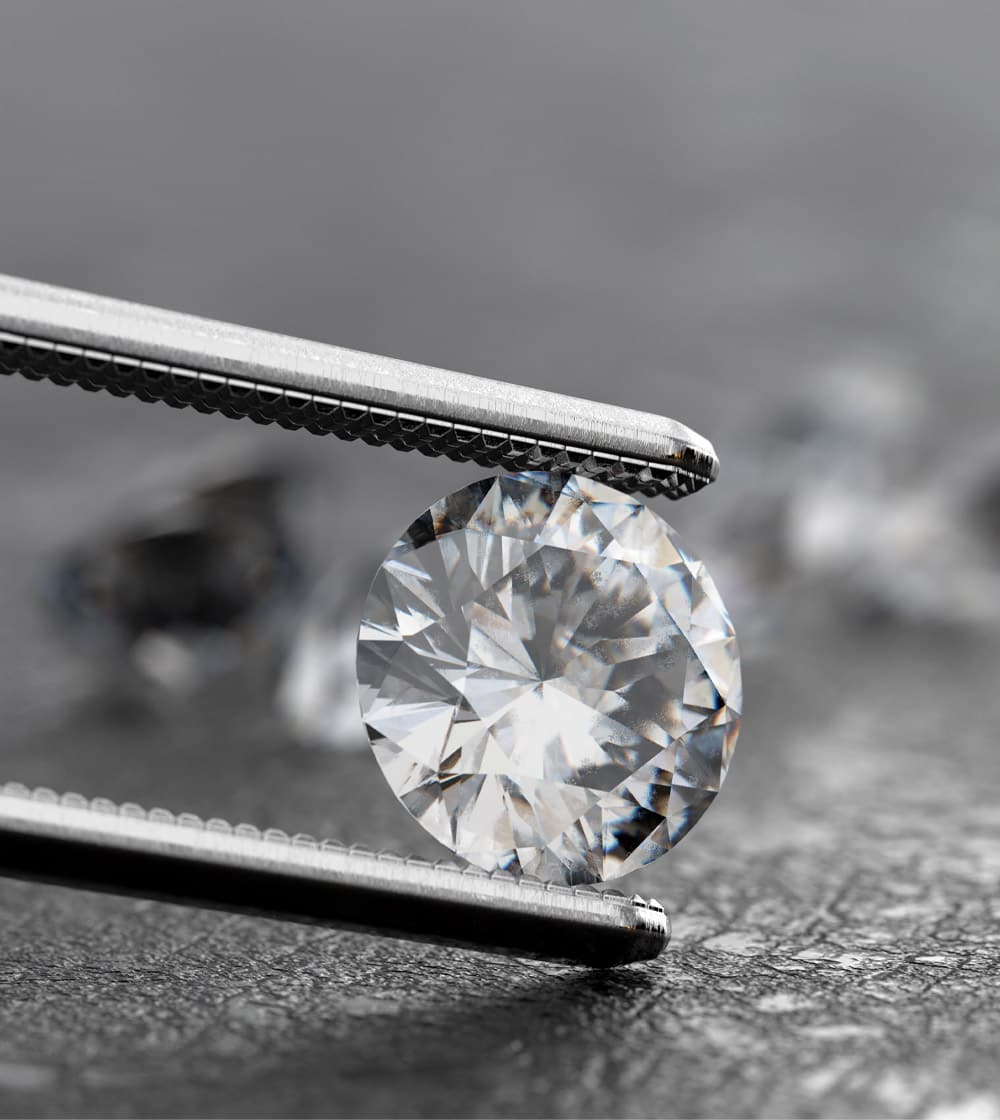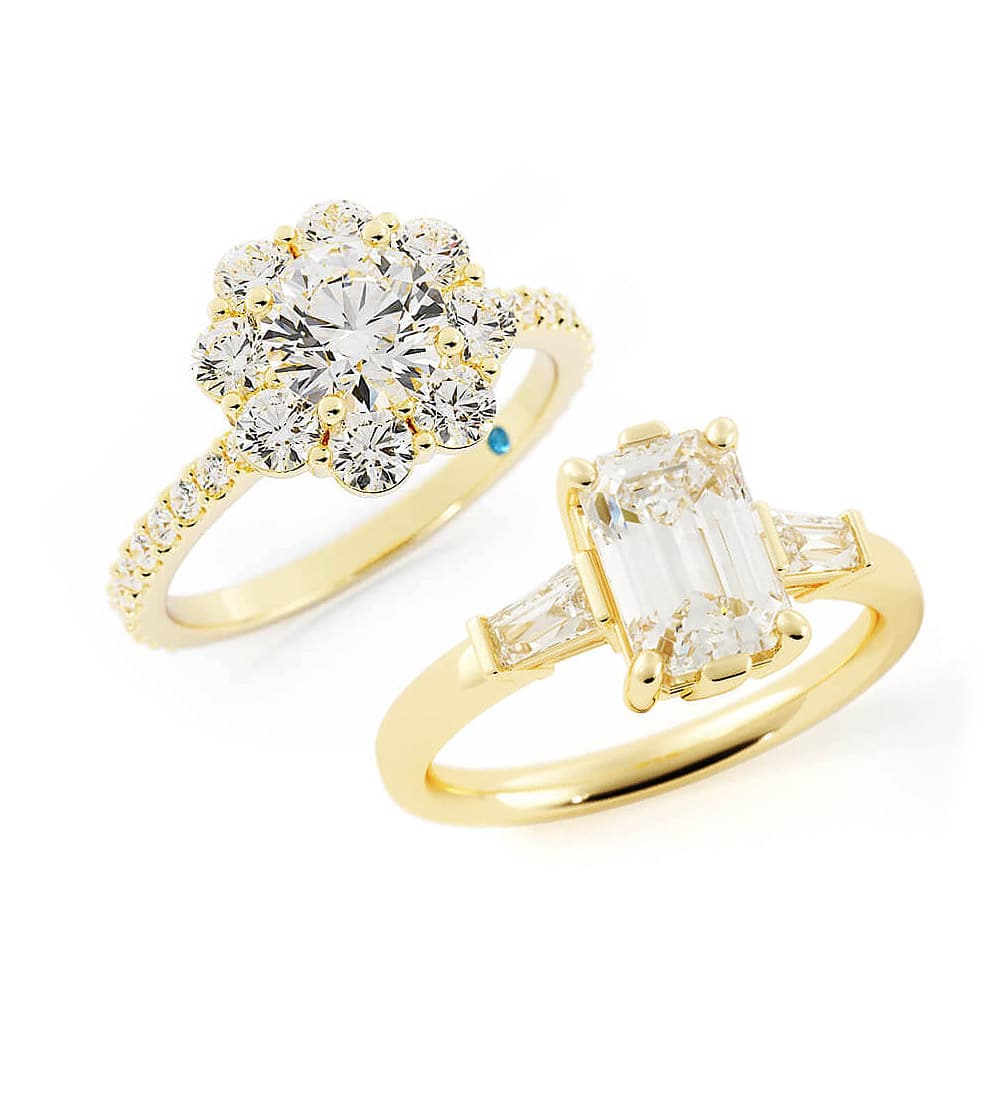Diamonds have a secure spot as the top engagement and wedding ring gem. Their monetary and aesthetic value can’t be denied, which is why so many people opt for this stunning option. If you’re thinking about including a diamond in your engagement or wedding ring, here are the basics you should know.

Natural Diamonds

Lab Grown Diamonds

Diamond Alternatives

Benefits of Diamonds
Diamonds have a high luxury status due to their age and limited supply. However, they offer more than just status. The gems have unbeatable durability (a perfect 10 on Mohs hardness scale) that makes them great options for everyday jewelry.
The clear or almost clear color of diamonds also pairs perfectly with a wide variety of metals, so you can ensure that your ring is designed to suit your unique style.
When it comes to diamonds, you have two options: natural and lab grown. Both options offer the same durability and clear color, but each option has a unique set of benefits.

Natural Diamonds
About 3 billion years ago, heat and pressure in the Earth’s mantle crystallized carbon atoms to create diamonds. Over time, those diamonds were brought to the surface by deep-source volcanic eruptions.
The pressure under which diamonds were formed gave them a hardened exterior that has allowed them to be turned into durable jewelry.

Benefits of Natural Diamonds
Many purists love natural diamonds simply because they are natural, but they do offer some advantages over lab-grown gems. One of the biggest benefits of natural diamonds is their luxury status. Because of their age and finite number, they are considered more luxurious than the lab-grown alternatives, which can be an important factor for many people.

Lab-Grown Diamonds
Thanks to modern technology, the diamond formation process has been replicated to produce high-quality, lab-grown diamonds. The technology uses extreme pressure and heat to form a diamond in a matter of weeks. These diamonds have essentially the same physical and chemical properties as natural diamonds, which means they look identical and are just as hard. The biggest difference is the price and resale value.

Benefits of Lab-Grown Diamonds
Even though both diamonds look the same, many people opt for the lab-grown option because of the benefits it offers. The price of lab-grown diamonds fluctuates, but they are generally more affordable than natural diamonds. This makes them a great option for those who love the look of diamonds but don’t love the idea of spending a lot on their engagement or wedding ring. For eco-friendly jewelry buyers, lab-grown diamonds offer an appealing benefit: sustainability. Rather than use up the natural supply of diamonds, jewelry suppliers create their own. That also means that lab diamonds don’t require mining, which can reduce the environmental impact of jewelry creation.
Diamond Alternatives
Natural and lab-grown diamonds are the only true diamond options, but some jewelry offers diamond alternatives. While some diamond alternatives are great options, others are not.
Moissanite
If you want high brilliance, clarity, and durability, moissanite is one of the best alternatives to diamonds. Moissanite is an incredibly rare white gemstone that has been replicated in lab-grown processes. Moissanite is actually more brilliant than diamond and almost as strong (measuring at about 9.25 on Mohs scale of hardness).
Cubic Zirconia
Cubic zirconia is quite different from a diamond. It isn’t formed from carbon atoms, which gives it less brilliance and a lower hardness rating. It is also much cheaper than both diamond options and has an extremely low resale value.
Most quality jewelry will use other options over cubic zirconia.

